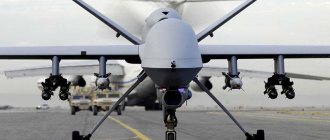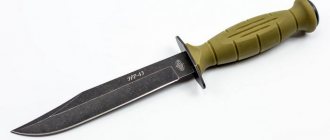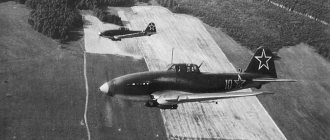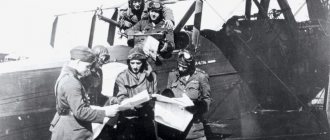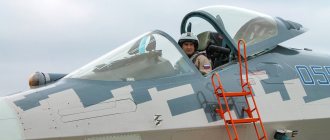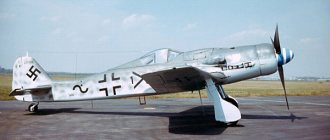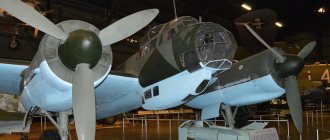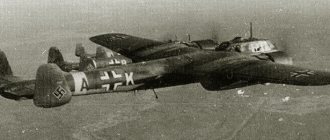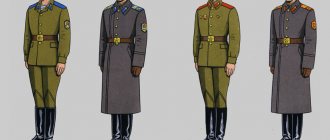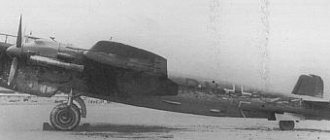Russian supersonic strategic bomber Tu-160. Armed with cruise missiles capable of hitting targets at a distance of more than five thousand kilometers The idea of using aircraft on the battlefield arose long before the first airplanes designed by the Wright brothers took off. The subsequent development of military aviation was unusually rapid, and to this day airplanes and helicopters have become a formidable weapon in the hands of commanders, second in power only to nuclear missile forces. Without dominance in the sky, achieving victory on earth is incredibly difficult, and often impossible. Aviation is capable of detecting and destroying any target; it is difficult to hide from it and even more difficult to defend against.
What is military aviation?
Modern air forces include special troops and services, as well as a rather complex set of technical means, varied in their intended purpose, which can be used to solve strike, reconnaissance, transport and some other tasks.
The main part of this complex is the following types of aviation:
- Strategic;
- Frontline;
- Sanitary;
- Transport.
Additional aviation units are also included in the air defense forces, navy and ground forces.
History of the creation of military aviation
Sikorsky's Ilya Muromets aircraft is the world's first four-engine bomber.
The first airplanes were used for a long time almost exclusively for entertainment and sporting purposes. But already in 1911, during the armed conflict between Italy and Turkey, aircraft were used in the interests of the army. At first these were reconnaissance flights, the first of which took place on October 23, and already on November 1, the Italian pilot Gavoti used weapons on ground targets, dropping several ordinary hand grenades on them.
By the beginning of the First World War, the great powers managed to acquire air fleets. They consisted mainly of reconnaissance airplanes. There were no fighters at all, and only Russia had bombers - these were the famous Ilya Muromets aircraft. Unfortunately, it was never possible to establish a full-fledged serial production of these machines, so their total number did not exceed 80 copies. Meanwhile, Germany produced hundreds of its own bombers in the second half of the war.
In February 1915, the world's first fighter aircraft, created by the French pilot Roland Garros, appeared on the Western Front. The device he invented for firing through a propeller was quite primitive, although it worked; however, already in May of the same year, the Germans commissioned their own fighters equipped with a full-fledged synchronizer. From this point on, air battles became increasingly common.
German fighter Fokker Dr.I. One of these aircraft was used by the best ace of the First World War, Manfred von Richthofen.
After the end of World War I, aircraft continued to develop rapidly, increasing their speed, range and payload. At the same time, the so-called “Douay Doctrine” appeared, named after its author, an Italian general, who believed that victory in the war could only be achieved through aerial bombing, methodically destroying the enemy’s defense and industrial potential, undermining his morale and will. to resistance.
As subsequent events showed, this theory does not always justify itself, but it was it that largely determined the subsequent directions of development of military aviation throughout the world. The most notable attempt to put the Douay Doctrine into practice was the strategic bombing of Germany during World War II. As a result, military aviation made a huge contribution to the subsequent defeat of the “Third Reich”, however, it was still not possible to do without the active actions of the ground forces.
Armadas of long-range bombers were considered the main strike instrument in the post-war period. It was in those years that jet aircraft appeared, which largely changed the very idea of military aviation. Huge “flying fortresses” became just a convenient target for the Soviet high-speed and well-armed MiGs.
B-29 - American strategic bomber of the 40s, the first carrier of nuclear weapons
This meant that bombers also had to become jet-powered, which soon happened. During these years, aircraft became increasingly complex. If during World War II only one aircraft technician was involved in servicing the fighter, then in subsequent years it was necessary to attract a whole team of specialists.
During the Vietnam War, multi-role aircraft, capable of striking ground targets as well as air combat, came to the fore. This was the American F-4 Phantom, which to some extent became a source of inspiration for the Soviet designers who developed the MiG-23. At the same time, the conflict in Vietnam once again showed that bombing alone, even the most intense, is not enough for victory: combat aviation, without the help of ground forces, is capable of forcing surrender only to a morally broken enemy, prepared in advance for defeat.
In the 70-80s of the last century, fourth-generation fighters appeared in the skies. They differed from their predecessors not only in flight characteristics, but also in the composition of their weapons. The use of high-precision weapons has once again changed the face of air warfare: there has been a transition from massive airstrikes to “targeted” ones.
Su-27 (left) and F-15 are the best fighters of the 80s of the last century
Today, the main direction of development of military aviation has become the intensive use of drones, both reconnaissance and strike, as well as the creation of stealth multi-purpose aircraft, such as the American F-35 or Russian Su-57.
Propeller aviation
Passenger aircraft Fokker F. VII-3m (Netherlands).
In the beginning. 20th century The ever-increasing demands of developing aerodynamics led to the creation of a new science - aerodynamics, the foundation of which was the fundamental works of N. E. Zhukovsky and S. A. Chaplygin (Russia), L. Prandtl and T. Karman (Germany), and other scientists. Under hand Zhukovsky organized aerodynamic. laboratories in Moscow University (1902) and Moscow. Imperial technical school (1910), Aerodinamich was founded in Kuchino (near Moscow) in 1904. Institute, one of the first scientific research in the world. organizations of this profile.
The First World War gave a significant impetus to the development of Armenia. In 1914, the warring parties had a total of approx. 800 aircraft (Russia - 206), during the war they were produced by St. 200 thousand. Flight technical skills have improved significantly. aircraft characteristics: speed increased to 200-220 km/h, altitude - up to 6000-7000 m, engine power - up to 300 kW, load capacity - up to 2-3.5 tons.
1920s passed under the sign of the formation of air transport. In almost all economically developed countries of the world, air transport companies have appeared to transport passengers, mail, and cargo, for which special ones have been created. passenger aircraft, and military aircraft were also converted. In Europe Junkers and Fokker passenger aircraft built in Germany were widely used on the lines. In 1919, Boeing (USA), which later became the largest aircraft manufacturer, produced its first aircraft - the B-1 flying boat. In 1923, J. Cierva (Spain) built a successfully flying S-4 gyroplane.
Russia is already during the Civil. war (1918–22) began to restore and strengthen its aviation. In 1918, the nationalization of aviation began. prom-sti. The Center was founded at the same time. aerohydrodynamic Institute (TsAGI), designed to ensure the development of aviation. science and technology. In 1920, the country's first higher aviation school was opened. educational institution - Institute of Engineers of the Red Air Fleet (later the Air Force Engineering Academy named after Prof. N. E. Zhukovsky). International flights began in 1922. airlines Moscow - Königsberg, in 1923 the first regular line Moscow - Nizhny Novgorod in the USSR opened. The first father The passenger aircraft was the AK-1, designed to carry 2–3 passengers, created at TsAGI (1924) under the direction of. V. L. Alexandrova and V. V. Kalinina. In the 1920s design bureaus (KB) of N. N. Polikarpov, A. N. Tupolev, D. P. Grigorovich, K. A. Kalinin were organized. First swelling serial reconnaissance aircraft R-1 Polikarpov (1923). His training aircraft U-2 (Po-2), thanks to its excellent flight qualities and unique scale of production (over 40 thousand aircraft were built in 1928–59), became one of the outstanding aircraft in the history of Azerbaijan. The first large-scale production aircraft was installed on the U-2 father air-cooled aircraft engine M-11 with a power of 73.5 kW designed by A. D. Shvetsov, which later found wide use in light aircraft. The A. N. Tupolev Design Bureau, which was part of TsAGI from 1922–36, was the first in the country to begin developing all-metal materials. aircraft. The heavy bombers created at the design bureau - the twin-engine TB-1 (ANT-4) and the four-engine TB-3 (ANT-6) - are the world's first heavy aircraft designed according to the cantilever (without external wing fastening elements) monoplane design. Grigorovich's I-2bis plane is the first father. fighter, adopted for service, which made it possible to exclude the military from the fleet in 1925. A. foreign aircraft. In the 20s A. S. Yakovlev’s activity as an aircraft designer began. On his sports aircraft AIR-1, the first (unofficial) world records were achieved in the USSR in 1927 (pilot Yu. I. Piontkovsky). In 1929, N.I. Kamov and N.K. Skrzhinsky built the country's first autogyro, KASKR-1.
Passenger aircraft Douglas DC-3 (USA).
Basic development trend of world aviation in the 1930s. associated with an increase in flight speed, ch. arr. as a result of a decrease in aerodynamic aircraft resistance. Planes began to be built first. according to a monoplane design with retractable landing gear in flight, streamlined engine hoods, closed cockpits, smooth (instead of corrugated) metal. sheathing. More powerful aircraft were being developed. engines, air blowers for supercharging the engine (in order to maintain its power at altitude), propellers with variable pitch in flight (for more efficient use of engine power in various flight modes), radio engineering. navigation systems, autopilots, anti-icing. systems, etc. The first all-metal ones were created. monoplane passenger aircraft (Boeing 247 and DC-3, USA). The Boeing 307 was the first aircraft to have a pressurized cabin for passengers, allowing passenger aircraft to fly at high altitudes. Airworthy models of helicopters were demonstrated in Germany (FA 61 G. Focke) and the USA (VS-300 I. I. Sikorsky).
In the 1930s In the USSR, the network of flying clubs, which played a large role in the training of flight personnel, was actively expanding, new educational institutions, design bureaus and scientific research were organized. aviation organizations profile. New aircraft and aircraft engine factories were put into operation, experimental and experimental aircraft were built, on which new scientific and technical technologies were tested. ideas and designs. During this period, at hand. A. N. Tupolev created the ANT-14 “Pravda” and ANT-20 “Maxim Gorky” aircraft, which were gigantic for that time. Original technical the aircraft built according to the designs of G. I. Baksheev, R. L. Bartini, V. N. Belyaev, P. D. Grushin, K. A. Kalinin, A. S. Moskalev, I. V. Chetverikov, B I. Cheranovsky, V. A. Chizhevsky, etc. At TsAGI, work began on gyroplanes and helicopters. I. P. Bratukhin, B. N. Yuryev, N. I. Kamov, M. L. Mil, V. A. Kuznetsov, N. K. Skrzhinsky, A. M. Cheremukhin and others took part in the creation of these aircraft. First experiment in the USSR. helicopter (TsAGI 1-EA) was built in 1930. In 1932, Cheryomukhin reached a height of 605 m on it, significantly exceeding the official one. world record, then equal to 18 m. To strengthen the country's defense capability, the USSR began large-scale production of I-15, I-16, I-153 fighters (Polikarpov), TB-3 and SB bombers (A. N. Tupolev), seaplanes MBR-2 (G. M. Beriev) and other aircraft. The industry constantly replenished its fleet of passenger aircraft with new aircraft: ANT-9 and ANT-35 by A. N. Tupolev, K-5 Kalinina, “Steel-2” and “Steel-3” by A. I. Putilova, KhAI-1 I G. Neman, Li-2 (licensed DC-3), etc. In the end. 30s serial production of new combat aircraft began: TB-7 (Pe-8) and Pe-2 bombers by V. M. Petlyakov, DB-3F (Il-4) bomber, LaGG-3 fighters by S. A. Lavochkin, V. P. Gorbunov and M. I. Gudkov, MiG-1 and MiG-3 A. I. Mikoyan and M. I. Gurevich, Yak-1 A. S. Yakovlev, Su-2 multipurpose aircraft P. O. Sukhoi, bombers Ar-2 A. A. Arkhangelsky and Er-2 V. G. Ermolaev, attack aircraft Il-2 S. V. Ilyushin. The design bureaus of V. Ya. Klimov, A. A. Mikulin, A. S. Nazarov, and A. D. Shvetsov created aircraft engines with increased power and reliability.
Bomber Boeing B-29 (USA).
Sturmovik Il-2 (USSR).
During the years of World War 2, the total production of aircraft in the world amounted to more than 750 thousand. The main combat aircraft of Germany were Me 109 (Messerschmitt) and FW 190 (Focke-Wulf) fighters, He. 111 (Heinkel), Ju87 and Ju88 (Junkers). The USSR's allies used Halifax, Lancaster and Mosquito bombers (Great Britain), as well as B-17, B-24 and B-29 (USA). Will destroy. The Allied aircraft consisted of Hurricane, Spitfire (Great Britain), P-38, P-39, P-40, P-47, P-51 (USA) and others. The USA, Great Britain, and Japan also used deck A. In the USSR, during the war years, new types of combat aircraft entered service: the Yak-7B, Yak-9, Yak-3 (Yakovleva), La-5 and La-7 (Lavochkina) fighters, the Il-10 attack aircraft (Ilyushina) , Tu-2 bomber (A. N. Tupolev). Under hand A. Ya. Bereznyak and A. M. Isaev created an experienced fighter-interceptor BI-1 with a liquid-propellant engine (1st flight in 1942, pilot G. Ya. Bakhchivandzhi). During the period of Vel. Otech. aviation wars USSR industry released St. 125,600 aircraft. By the end of the war, the speed of serial fighters approached 700 km/h and the possibilities of further increasing it on aircraft with piston engines and propellers were practically exhausted.
Purpose of military aviation
List of main tasks that are solved with the help of military aircraft and helicopters:
- Conducting all types of aerial reconnaissance;
- Artillery fire adjustment;
- Destruction of ground, sea, air and space targets, small and large, stationary and mobile, area and point;
- Mining of areas;
- Protection of airspace and ground forces;
- Transportation and landing of troops;
- Delivery of various military cargo and equipment;
- Evacuation of the wounded and sick;
- Conducting campaign events;
- Inspection of the area, detection of radiation, chemical and bacteriological contamination.
Thus, military aviation can bring enormous benefits, of course, provided that it is used correctly.
Required documents
By the time of admission to the school, a package of documents must be collected. The generalized list will look like this:
- Passport of a citizen of the Russian Federation;
- Certificate for 9th grade (for admission to a college) or certificate for 11th grade (for admission to a university);
- Unified State Examination results (for admission to a university);
- Military ID (for boys);
- Compulsory health insurance policy;
- Insurance pension certificate;
- Application for enrollment (issued at the school when submitting documents).
Important: the school has the right to establish the list of documents itself, so you need to look at the current requirements on the website of the specific school.
Here is an example of the required documents for a specific flight school:
Required documents for applicants to the Buguruslan Civil Aviation Flight School named after Hero of the Soviet Union P.F. Eromasova
Military aviation equipment
During the First World War, attack airships (Zeppelins) were actively used, however, today there is nothing like this in the Air Force. All equipment used is airplanes (airplanes) and helicopters.
Aircraft
The breadth of the range of tasks solved with the help of aviation forces the Air Force to include several different types of vehicles. Each of them has its own purpose.
F-111 - American front-line bomber with variable sweep wings
Combat aircraft
This type of aviation includes:
- Fighters. Their main purpose is to destroy enemy aircraft and gain air superiority, local or complete. All other tasks are secondary. Armament - guided air-to-air missiles, automatic cannons;
- Bombers. Can be front-line or strategic. They are used mainly for attacks on ground targets. Armament - air-to-surface missiles (including unguided ones), free-falling, gliding and guided bombs, as well as torpedoes (for anti-submarine aircraft);
- Stormtroopers. Used primarily for direct support of troops on the battlefield;
- Fighter-bombers are aircraft capable of striking ground targets and conducting air combat. All modern fighters are like this to some extent.
Strategic bombers differ significantly from other combat aircraft in their weapons system, which includes long-range cruise missiles.
Reconnaissance and air surveillance aircraft
In principle, “regular” fighters or bombers equipped with the necessary equipment can be used to solve reconnaissance tasks. An example is the MiG-25R. But there is also specialized equipment. These are, in particular, the American U-2 and SR-71, and the Soviet An-30.
High-speed reconnaissance aircraft SR-71 Blackbird
Long-range radar detection aircraft - the Russian A-50 (created on the basis of the Il-76), and the American E-3 Sentry - also fall into this category. Such machines are capable of conducting deep radio reconnaissance, however, they are not stealthy, since they are a source of powerful electromagnetic radiation. Such reconnaissance aircraft as the Il-20, which are mainly engaged in radio interception, behave much more “modestly”.
Transport aircraft
This type of aircraft is used to transport troops and equipment. Some models of vehicles that are part of transport aviation are adapted for landing - both conventional and parachuteless, carried out from extremely low altitudes.
The most commonly used military transport aircraft in the Russian army are the Il-76 and An-26. If it is necessary to deliver cargo of significant weight or volume, heavy An-124s can be used. Of the American military aircraft for a similar purpose, the most famous are the C-5 Galaxy and C-130 Hercules.
Il-76 is the main aircraft of Russian military transport aviation
Training aircraft
Becoming a military pilot is quite difficult. The hardest thing is to gain real skills that cannot be replaced by virtual flights on a simulator or deep study of theory. To solve this problem, training aviation is used. Such aircraft can be either specialized machines or variants of combat aircraft.
For example, the Su-27UB, although used for pilot training, can be used as a full-fledged fighter. At the same time, the Yak-130 or the British BAE Hawk are specialized training aircraft. In some cases, even such models can be used as light attack aircraft to strike ground targets. This usually happens “due to poverty”, in the absence of full-fledged combat aircraft.
Helicopters
Although rotary-wing aircraft were used to a limited extent already during the Second World War, after the end of hostilities, interest in “helicopters” noticeably decreased. It soon became clear that this was a mistake, and today helicopters are used in the armies of various countries around the world.
Transport helicopters
Conventional airplanes cannot take off and land vertically, which somewhat narrows their scope of application. Helicopters initially had this property, which made them a very attractive means for delivering goods and transporting people. The first full-fledged “debut” of such machines took place during the Korean War. The US Army, using helicopters, evacuated the wounded directly from the battlefield, delivered ammunition and equipment to the soldiers, and created problems for the enemy by landing small armed detachments in his rear.
V-22 Osprey is one of the most unusual examples of rotorcraft
Today the most typical transport helicopter in the Russian army is the Mi-8. The huge heavy Mi-26 is also used. The US military operates the UH-60 Blackhawk, CH-47 Chinook, and the V-22 Osprey.
Attack helicopters
The first rotary-wing vehicle, created specifically to engage ground targets and provide direct fire support to its own troops, appeared in the United States in the 60s. It was a UH-1 Cobra helicopter, some modifications of which are still used by the US military today. The functions of these machines to some extent overlap with the tasks of attack aircraft.
In the 70s, attack helicopters were considered perhaps the most effective anti-tank weapon. This became possible thanks to new types of guided aircraft missiles, such as the American TOW and Hellfire, as well as the Soviet Phalanx, Attack and Vikhryam. A little later, combat helicopters were additionally equipped with air-to-air missiles.
The most “brutal” combat helicopter in the world, the Mi-24, is capable of not only striking ground targets, but also transporting paratroopers
The most famous aircraft of this class are the Mi-24, Ka-52, and AH-64 Apache.
I want to fly: how to become a civil aviation pilot
For those who dream of working in the sky, there are two options - flight school and private pilot school. Aircraft control falls under the “technical operation” section, which means that it is not necessary to obtain a higher education—secondary education is sufficient. Nevertheless, educational institutions impose strict requirements on applicants, which not all applicants meet.
For example, before admission you need to undergo a mandatory medical examination, just like a real pilot before concluding an employment agreement or contract (we're not kidding), and check your level of physical fitness. The standards depend on age and gender, the program includes short and long distance running, pull-ups or push-ups, jumping and exercises for the abdominal muscles. The Medical Flight Expert Commission (VLEK) evaluates the state of not only physical but also mental health. Only those whom she recognizes as suitable can become students. Psychological testing means a lot: if two applicants have the same grades in the certificate, the commission will make a choice in favor of the one who passed it better. Students should not forget about their health even after admission: if it worsens during their studies, the matter may end in expulsion.
An undoubted advantage of state flight schools is the opportunity to study for free. Upon completion of the course, their graduates are awarded the commercial pilot qualification (the second of three possible ones: private pilot, commercial pilot and airline pilot), while private aviation schools can only offer the private pilot qualification. It will not allow you to find a job in your specialty, but it will allow you, in fact, to learn how to fly an airplane. However, studying at a private school is expensive: a theoretical course will cost 45 thousand rubles, and practical classes will cost from 12 thousand rubles per hour. In total, to complete the course you need to fly at least 40 hours.
One of the main advantages of being a pilot is the high salary. The second pilot receives on average 150 thousand rubles. per month, and the first one - from 300 thousand rubles, and you can become one at the age of 26-27, with two thousand hours of flight practice as a co-pilot under your belt. In addition, pilots will receive many pleasant bonuses: 70 days of vacation per year, corporate air tickets for themselves and their family members, and housing if they have to work in another city. , for example, promises pilots a salary of up to 400 thousand rubles. per month (the crew commander, a highly qualified commercial pilot, can count on this salary), as well as a social package (up to 300 thousand rubles per pilot annually).
The shortage of pilots is now so great that flight school graduates often don’t even have to look for work: airline representatives themselves come to schools shortly before graduation and talk about open vacancies. A flight school graduate who has received a commercial pilot certificate can immediately begin working as a co-pilot (trainee) upon completion of training.
Most graduates want to immediately get into a major airline). However, we should not forget that the stumbling block in this profession is the number of hours of flight practice, and the graduate does not have enough of it. That is why it is better to look for your first job in a small airline (say, regional) in order to fly the required number of hours there. After this, the aspiring pilot can safely apply for a vacancy in a major airline. It should be borne in mind that in companies, young employees often need to undergo additional training, which will allow them to learn how to fly a certain model of aircraft.
